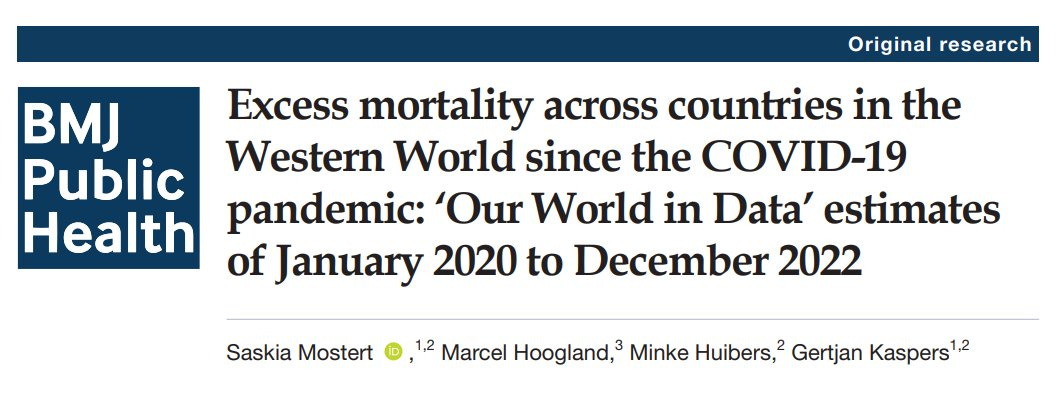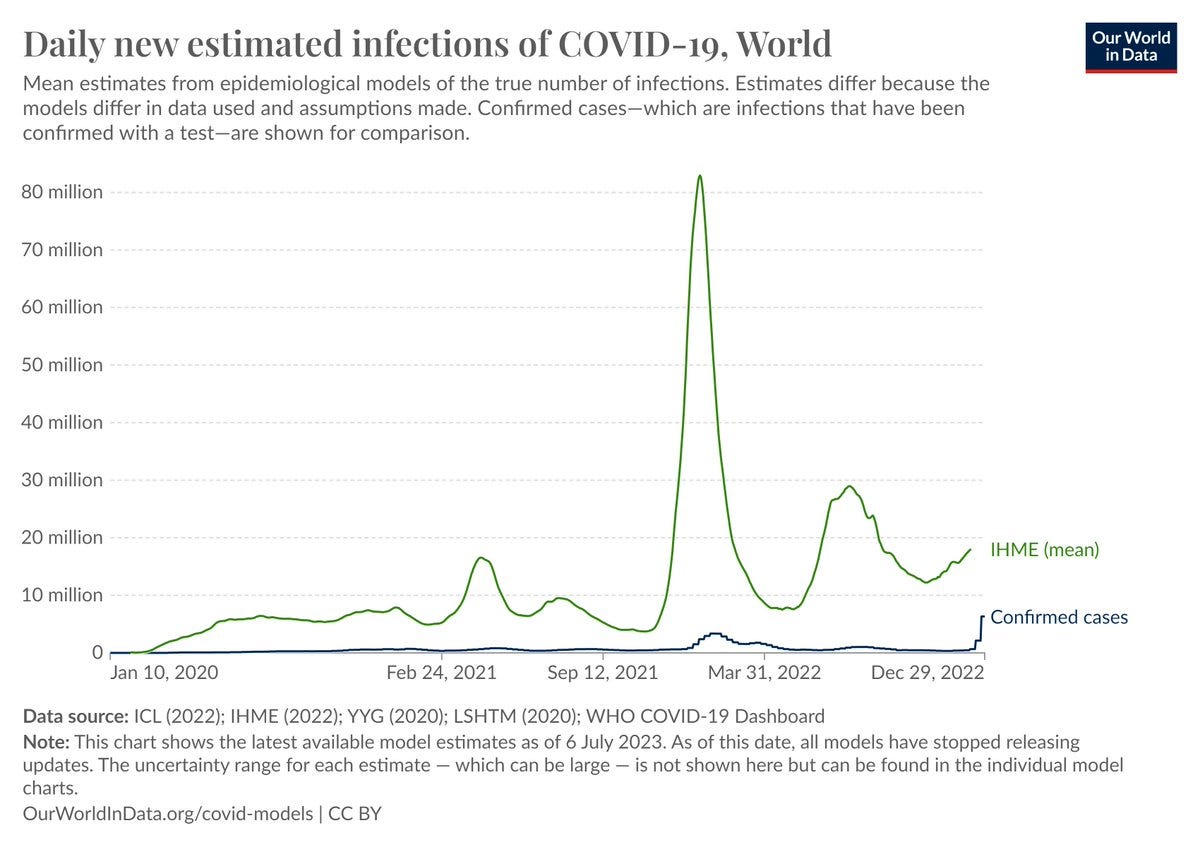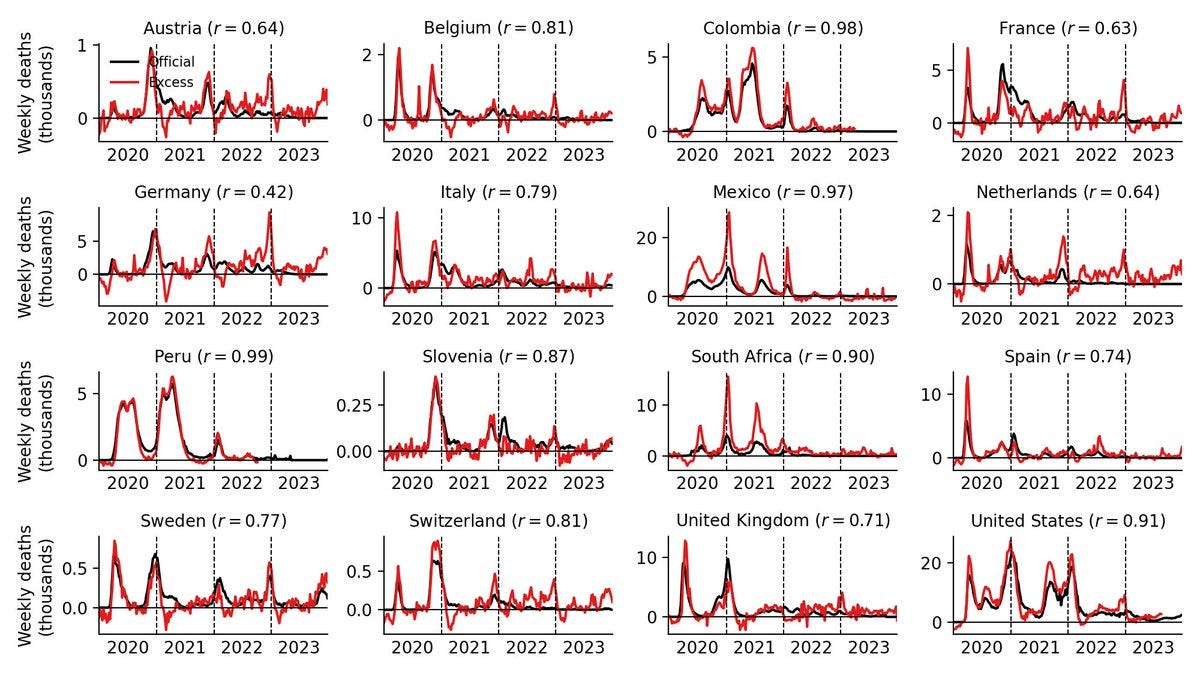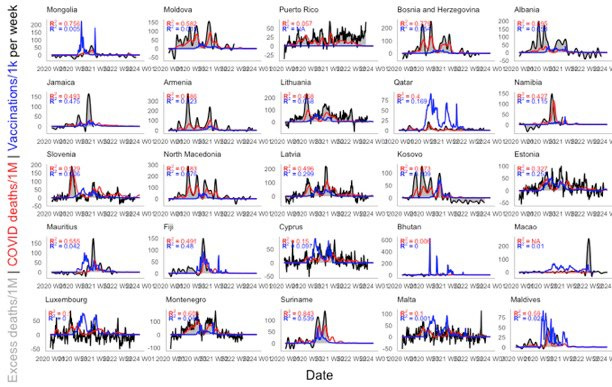Guest post: A terrible academic paper has fueled renewed anti-vax journalism - it must be retracted
A debunk and a plea for retraction from actuary Stuart McDonald
A paper was published in BMJ Public Health that has led to dangerous renewed vaccine deaths conspiracy theories. The actuary Stuart McDonald did a brilliant thread yesterday debunking the paper and has given me permission to share it with you as a Substack post. I think it’s important that his analysis reaches as many people as possible!
*******************************************************************
Guest post by Stuart McDonald
I’m late to this but I wanted to set out some thoughts on the awful BMJ Public Health excess deaths article. Commentary has focussed on media coverage, linking deaths to vaccines, but I want to discuss the article itself, which should not have been published in its current form.
That is not to let The Telegraph, New York Post and others who misreported this off the hook entirely. Reckless reporting has done considerable harm, going well beyond what was claimed in the paper. More lives will be lost as misinformation fuels vaccine hesitancy.
But as I said, when BMJ publishing company distanced itself from media misreporting, this was always going to happen. It's all very well to say the 'study' doesn't establish a link between excess deaths and vaccines, but it's full of inappropriate insinuation.
The first question is why this article was published at all. It adds nothing to the literature. The excess deaths commentary is a copy/paste from World Mortality Dataset, a labour of love by @ArielKarlinsky and @hippopedoid , who are understandably furious.
[CP Note: while the authors did cite the Karlinksy and Kobak source paper, they did just appear to copy and paste much of the methods.
[Stuart’s thread continues]
In fact it's worse than a copy/paste because the original World Mortality Dataset (WMD) contains all sorts of useful analysis and insights that contradict insinuations in the BMJ Public Health article. The authors have ignored these insights entirely in their commentary.
The discussion section of the article talks about "the aftermath of the pandemic" and "persistent excess mortality" but the article only includes data from 2020 to 2022. This is very much peak-pandemic! 2022 was the year Omicron hit and many people caught Covid for the 1st time.
In fact it is estimated that there were more new Covid infections in 2022 than in 2020 and 2021 combined.
So before the authors excitably demanded "leaders and policymakers need to thoroughly investigate underlying causes" they might have asked the obvious question. Is it Covid?
The question of whether Covid drove global excess deaths in 2020-2022 is not a hard one to answer. Not now anyway! The same source the authors copied from contains good analysis.
Black line is Covid deaths. Red line is excess deaths. You can see by eye how well these line up.
If you prefer statistics to eyeballing charts you can look at the "r" numbers (at the top of each plot). This is the correlation coefficient and measures the strength of relationship (from -1 to +1). 0 means no relationship. 1 means they move in perfect unison.
These correlations are very strong indeed!
The relationship between Covid deaths and excess deaths in the countries shown is so strong that we really ought to be able to stop there.
And it applies to the 47 countries in the BMJ Public Health article too, as shown here by @UncleJo46902375.
But it's worth pointing out that there is no corresponding relationship between excess deaths and vaccine rollouts, as @jsm2334 does here.
there is more...
Given the insinuation in the article about the link between excess deaths and vaccines it is surprising that the authors didn't take five minutes to analyse this relationship in the 47 countries studied. The data can be easily accessed on @OurWorldInData.
If we look at the 10 countries which have the highest excess deaths (out of the 47 considered) it is immediately apparent that they are countries with lower vaccine uptake.
If we look at the 10 countries which have the lowest excess deaths (out of the 47 considered) it is immediately apparent that they are countries with higher vaccine uptake.
Now my 5 minute analysis isn't proof of the harm reduction that vaccines gave us.
There are a lot of other differences between these two groups of countries beyond their vaccine uptake.
But it is a huge problem for anyone trying to insinuate that vaccines are the problem!
Anyone trying to suggest that vaccines are the cause, or even part of the cause, for excess deaths needs to explain why the most excess deaths are in the least vaccinated countries and vice versa.
The association is in the opposite direction to what's insinuated in the article.
There have of course been people harmed by side effects of Covid vaccines, and some have sadly died. But the scale is orders of magnitude lower.
This BMJ Public Health study says 182,533 excess deaths in the UK, 2020-22.
Meanwhile, @ONS tell us there were 56 deaths due to Covid vaccines in E&W.
Finally, as the authors are suggesting a persisting problem, why did they not use newer data? Again, it's a 5 minute job to download 2023 data from the same dataset they copied 2020-22 from.
Excess deaths were 79% lower in 2023 than 2022 (for 45 countries with 2023 data).
I could go on, and may come back to some of the many flaws and red flags in this NMJ Public Health article. But this thread is already too long.
In summary:
- excess deaths in 2020-23 strongly associated with Covid waves
- highest excess deaths are in least vaccinated countries and vice versa
- excess deaths much lower in 2023
- article has no new findings and provides no evidence to link excess deaths to vaccines harms.
A further set of article red flags by Stuart
Stuart has added to his thread with some further red flags in the paper, which I have added to this post below (with his blessing).
I said I might come back and detail some of the more obvious red flags in the paper. Spotting these and calling them out is no substitute for analysis and proper peer review. But they are things that should instantly put an expert on their guard when reviewing a paper.
Red Flag 1:
Uncritically cites Ioannidis’ biased and implausibly low Infection Fatality Rate (IFR) estimates
These are inconsistent with other work and have repeatedly been shown to be impossible, based on real-world population fatality rates.
I first addressed this more than 4 years ago.
Red Flag 2:
Refers to an absolute risk reduction (ARR) of 0.88%
There is absolutely no reason why a competent author writing in good faith would lead with this number from a trial when prevalence was low so the maximum possible ARR was 0.93%.
The relative risk reduction was 95%.
Red Flag 3:
Talks repeatedly about “non-Covid excess mortality” in 2020 and 2021 without acknowledging that on balance of probabilities these were undiagnosed Covid.
You just don’t get sudden large spikes of people dying of dementia or old age by chance at the same time as Covid spikes.
Red Flag 4:
This not a scientific statement (see Katzourakis calling it out below): “gene therapy products requiring long-term stringent adverse effects monitoring”
Really? Still, at least we know the studies were French.
Red Flag 5:
Why the sudden interest in excess mortality and public health from these oncologists with no history of related research?
It’s not for me to be a gatekeeper, far from it, but it’s curious. I recommend this thoughtful thread from a retired medical journal editor.
Red Flags 6-9:
And back to where we started:
why not look at the newer data?
why not analyse timing of excess deaths vs possible explanations?
why not look country by country?
why not compare excess to vaccine uptake?
This is just a sample of red flags that jumped out to me on a quick read-through of the paper. I can't understand why they would not be obvious to the editorial team at BMJ Public Health or to peer reviewers.
What was going on in the 12 months between receipt and publication?
******************************************************************
Stuart and I and many others believe that BMJ Public Health need to retract this paper ugently. Toghether, the unsupported implications fueling the anti-vax movement and the sloppy but biased copy/paste of the Karlinsky and Kobak surely make the case for retraction incontrovertible.

















How did such rubbish get published? And in BMJ Public Health? Surely there must be a few people who allowed it through, knowing it was dodgy but so keen to push the antivax agenda that they turned a blind eye? Of course those who wrote it will now be lauded by the anti vax crowd- only money and fame in their futures and grifters are of course going to grift- but feeling very let down by the BMJ.
I belong to a locum group for doctors, there are 2 antivaxers on it, we are supposed to be discussing locums, contracts etc but instead we regulary get sent articles from the Telegraph/TikTok/youtubec on antivax or attacking doctors who have promoted vaccination, saying they took bak handers from pharmacy companies and worse.
Anti vax stuff is relentless and everywhere. Thousands off deaths caused already.
But it pays, look at Andrew Wakefield, lives in a mansion in the US and was married to a supermodel , for a while...
And look out, now they are coming for sunscreen(no really, look it up..), which apparently 'causes skin cancer' and parents are being advised to 'build up their children's immunity to sun' by gettng them sunburnt regularly. Can't wait to see that one in BMJ Public Health...
How the fuck did this crap get published??? Apparently they have not learned anything from the Andrew Wakefield mistake🤬 Another junk study where children were tortured and scientists quit the study. He started the anti vaccine bullshit.